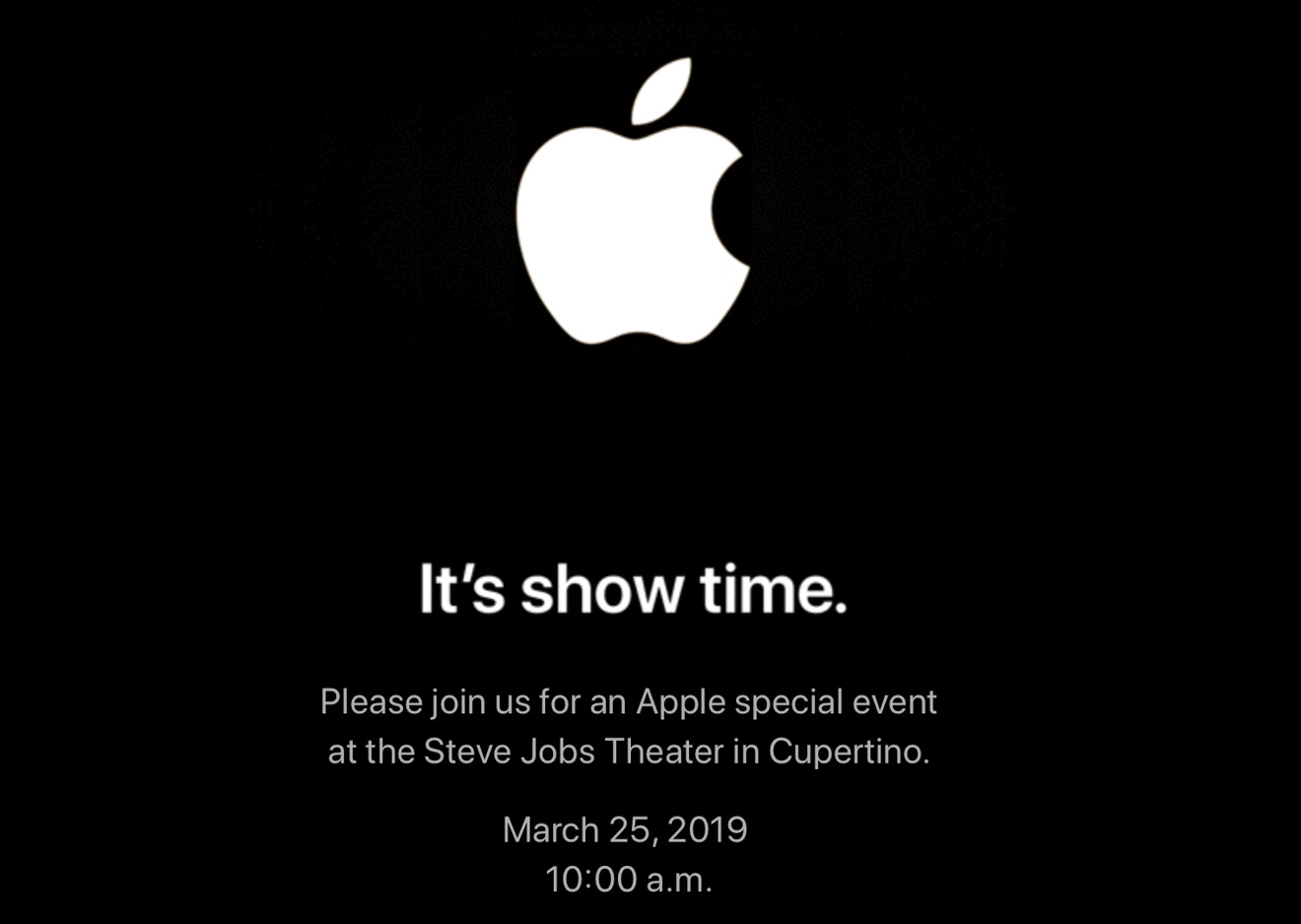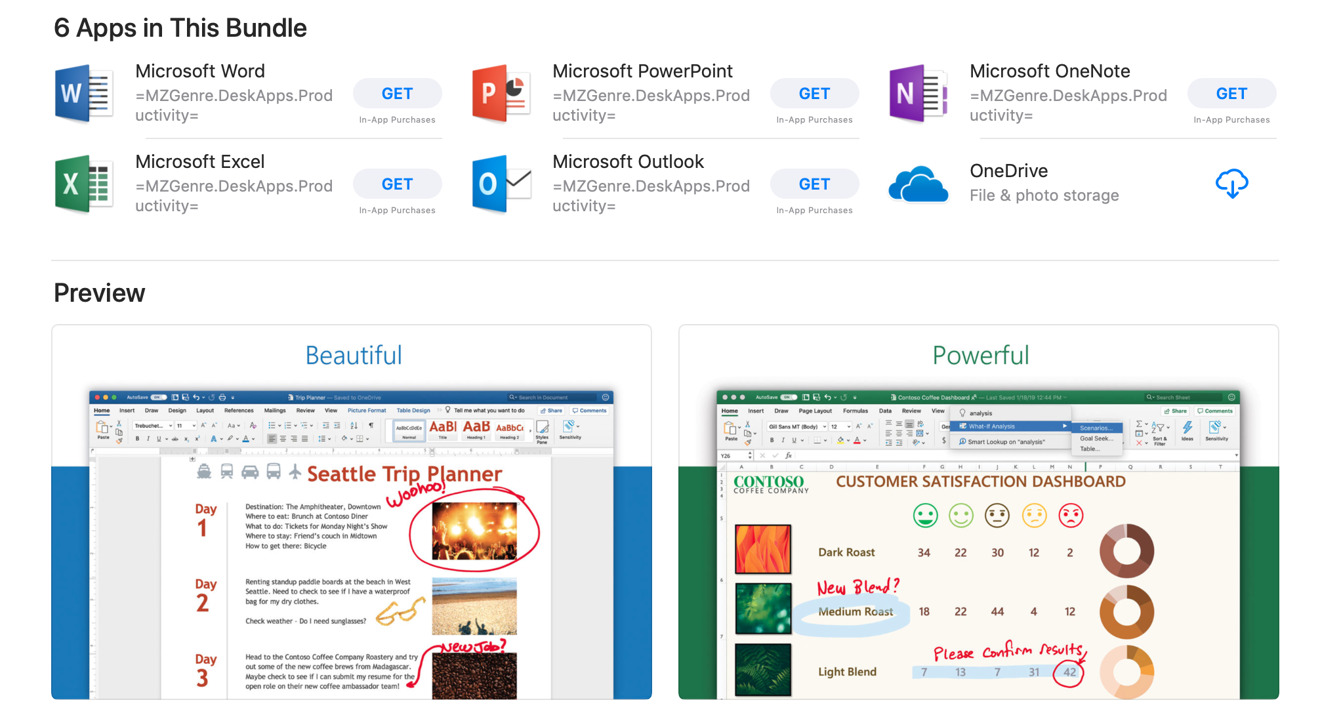It's almost "show time." That's the phrasing used in media invitations to Apple's March 25 event, where the company is expected to unveil its subscription packages for video, news, magazines, and games. It appears Apple is continuing to "pull the thread" to see where the future of television leads, and it sure looks like that future is tight integration between iOS, Apple TV and HomePod.
A new expansion of the Walled Garden
When Apple launches new products and services, it rarely focuses much attention on all the work required behind the scenes. This creates the illusion that such product launches are easy, just something that a corporation threw together based on a checklist of necessary features.
Most of the criticism directed at Apple niggles with what those features are, without much thought to what would be involved with "adding" something as "simple" as, say, native Spotify integration with HomePod, some legacy ports, or some other massive effort that's easy to dream up as a "missing feature."
Apple's launches also create the illusion that any other company could just throw money at the same problem and get the same results. That clearly didn't occur with Samsung's Milk or Galaxy Gear; Microsoft's PlaysForSure, its purchase of Nokia or its Surface hardware; Google's various TV box offerings, its acquisition of Motorola, its attempts at building tablets or notebooks; or the entire industry's consortium to develop digital video distribution services such as UltraViolet downloads or Miracast streaming. Doing anything big is actually extremely hard.
Looking back on Apple's recent history in television, it's clear that a lot of invisible efforts are required to build attractive and sustainable solutions. There are few initiatives that Apple has worked on that have fizzled, such as iTunes LP and Extra, its digital answers to DVD bonus content and the "enhanced CD" with video clips which never really took off.
However, the threads that Apple keeps pulling in television are overall establishing a very successful expansion of the Walled Garden that Apple first created to make iTunes' commercial music and movies available as "audio-visual software" for Macs and then iPods, and then the App Store market that launched native software titles for iPhones and later iPad.
Services are a subscription to sell hardware
While pundits keep forwarding the idea that Apple is giving up hardware to simply become a Netflix, the reality is that Apple's expanding efforts to make AirPlay 2, Apple Music streaming and iTunes movie downloads available on partner hardware from Samsung TVs to Alexa WiFi microphones is part of a strategy where Apple TV, HomePod and iPads all get a greatly expanded ecosystem to thrive in. Subscription software is a killer app that keeps killing.
Rather than giving up hardware for Services— as the dumbest hot takes suggest— Apple is reducing its dependence on unit sales of digital downloads and increasingly moving to a subscription model for audio, video, applications, and games— specifically with the intent to sell more hardware.

Apple clearly thinks people will use AirPlay 2 and subscription content on a variety of devices once they get a taste
Apple has already largely migrated iTunes from download sales to Apple Music's subscription streaming. Those efforts to shift the company's legacy iTunes downloads into a subscription model is seldom appreciated as an example of astute adaption to change. However, Apple has rapidly turned around its huge ship in same the way that Microsoft had to scramble to attach a web browser to Windows to keep control of the PC desktop in the 1990s. It was pivot or die, and Apple has survived stronger than ever.
Spotify, a company that was claiming the most music streaming subscribers globally and crowing that it does business on platforms the tech media likes to describe as "dominant," is suddenly crying that Apple Music and the Apple Store is a "monopoly" and that it needs governments to intervene on its behalf to force Apple to serve its interests for free.
That speaks volumes about the success Apple is seeing in making its shift from downloads to subscriptions. It also says something really unflattering about Spotify's ability to find customers on its own and the supposed "dominance" of Android and Windows as computing platforms.
Oddly enough, the same pundits who squawk about Apple Music being the end of HomePod are hopeful that Spotify will soon learn how to navigate the consumer electronics hardware market and figure out how to sell a new device that helps to sell Spotify as a service. It's like they don't even read their own work.
Subscriptions better support software development
While subscription streaming royalties don't deliver nearly the same revenues as music downloads or CDs for artists, subscription software appears to be working out really well for developers.
Adobe and Microsoft have both shifted their massive software business to subscription models, and the result has been dramatically successful. It has created reoccurring revenues that support ongoing development in a model that's far more healthy— and sane— compared to big, expensive marketing releases every couple years that have to focus on fancy features to woo software suite purchases.
Rather than Adobe trying to hype up the Healing Brush as the reason to pay for an all-new Photoshop, or Microsoft having to refresh the UI of Office with the Ribbon just to push more boxes out the door, both software houses can focus on what they know to be actual, incremental improvements and deliver these as soon as they're ready.
It's also working out well for small developers, who can work on new titles and app functionality rather than focusing on sales and marketing— or running into the situation where their customers expect perpetual free app upgrades without ever paying for any of that work.
Subscription software is effectively the best way to pay for software because it keeps subscribers up-to-date on the latest tools without needing to regularly sell them on buying each new iteration. You just have to sell users on an ongoing subscription once and then keep them happy with it.
Apple and the Subscription OS
While Microsoft convinced the world back in the 1990s that the best way to sell software was to monopolize the market and sell big monolithic packages, its business was really created and sustained by Windows' invisible tax that was slapped on PC boxes. When people bought new PCs, they effectively got Windows "for free" because it was being paid for by the PC licensee. That effectively blocked any competition for alternative PC operating systems like OS/2, NeXT, BeOS or Linux.
Everyone in the tech media could only see that Microsoft was also selling standalone Windows retail boxes, and implored Apple to follow the same model of charging money for its Mac system software. That was dumb advice that didn't work out well at all.
With the introduction of the iPhone in 2007, Apple made iOS free and promised regular updates to deliver features that wouldn't cost extra down the line. In 2009 Apple slashed the price of macOS upgrades from $129 to just $29 for Snow Leopard, then later to $19 on Mountain Lion, and finally began shipping new updates for free starting with 2013's Mavericks. As with Windows PCs, the price of the OS was now hidden in the development costs of Macs.
Mac and iOS buyers effectively get a subscription to several years of OS updates by paying a premium for Apple hardware. So Apple effectively pioneered the "healthy and sane" approach to subscription software upgrades with macOS, iOS and its other OS platforms. It also began bundling significant software packages with new hardware, and these are also updated for free: Pages, Keynote, Numbers, iMovie, GarageBand and so on.
Apple has also seen success in selling online services under the iCloud brand, which provides cloud storage, backup, cloud sync and a variety of other services all bundled into an ongoing fee. Services is now Apple's fastest-growing segment in revenues, outpacing the growth of both Macs and iPads. Yet Services aren't coming at the cost of hardware sales; they are clearly driving new hardware sales.
In fact, the hardware that gains value from paid or free Services subscriptions (Apple Music, iCloud, OS updates, iWork) is what Apple is selling best. Hardware that doesn't really benefit from content or OS subscriptions have largely been discontinued (AirPort routers, printers, displays, webcams).
One of the biggest potential hardware beneficiaries of these subscription models is Apple TV, iPad, and HomePod, all of which become more useful when you have subscription content to play on them. And once you are getting subscription content, you have more reason to buy additional Apple hardware to use with it, as the next segment will examine tomorrow.
 Daniel Eran Dilger
Daniel Eran Dilger









-m.jpg)






 Christine McKee
Christine McKee
 Marko Zivkovic
Marko Zivkovic
 Mike Wuerthele
Mike Wuerthele

 Amber Neely
Amber Neely
 Sponsored Content
Sponsored Content
 Wesley Hilliard
Wesley Hilliard








35 Comments
No thanks I'm not subscribing to anything
"Rather than Adobe trying to hype up the Healing Brush as the reason to pay for an all-new Photoshop"… Except Adobe's now doing something worse, with little recourse for subscribers: pushing out half-baked, buggy software, with new "features" that few are asking for while very often ignoring the bugs each new release adds to the list. Back in the days when I could buy Photoshop (and Illustrator and Indesign), I could wait out a buggy release or ignore one whole "upgrade" entirely. Now, if a colleague or customer automatically updates their version(s) of Adobe CC, I have to as well or I won't be able to open their files (Photoshop is more forgiving than AI or ID in this regard). In general, the "features" are getting less and less useful (Photoshop reversing SHIFT to constrain proportions is one egregious example) as well but I imagine Adobe needs to offer a bullet point list of "new!" every now and then to justify the expensive subscription. I guess they have little to lose as they have a monopoly on industry essential design software for the foreseeable future. So, after years of paying Adobe for a subscription, the moment I decide not to pay anymore, I can no longer open a single file I created in their software. How is this fair? Why are you cheering?
Pssst... Apple, no company is an island. No one is going to buy into your overpriced and extremely restrictive ecosystem in order to watch a few TV shows. If they really want to see them, they will just download the torrent.
I feel the biggest difference between the "old Apple" and the "new Apple" (if you allow the notion there's a real post-Jobs demarcation), is that the core mission of the old (Jobsian) Apple was to invent (and perfect and add enjoyment to) whole new ways of solving problems and meeting needs - both existing and emerging - with entirely new (or close to "perfected") tools for those who wanted or needed to use digital tech (i.e., famously, "the rest of us") - in ways, that yes, generated a shit ton of money.
It was still the "Apple way," there were still aspects of a walled garden, still we'll tell you what your range of options are in order for us to maintain control over key aspects of its tools, but it was still very much customer need forward.
Whereas in this new Apple, it feels more like "how can we manipulate the people who use our tools into helping us make more money by tweaking existing lines of business not invented at Apple".... ....I just feel that the value add of another streaming video service with proprietary content, another music service, another digital news distribution platform etc. is more to Apple's bottom line than to most people's lives other than giving them a familiar brand to choose for those services. Color me unimpressed, even though I realize that in our economic system, large growth companies in highly competitive industries that aren't figuring out new (or borrowed) ways to grow are already dying, so lacking much that's obvious to invent (unless they have things in the pipeline that I'm not aware of), they have to expand into markets already crowded with alternate "solutions."
Accordingly, I stay as cross-platform as possible (Google/YouTube music works great on all my heterogenous devices, DropBox and Evernote are blessings that go places with me that iCloud and Notes don't - same with Pages which creates files I can't share with most of the computing world, leaving me dealing with (though not loving) Word.